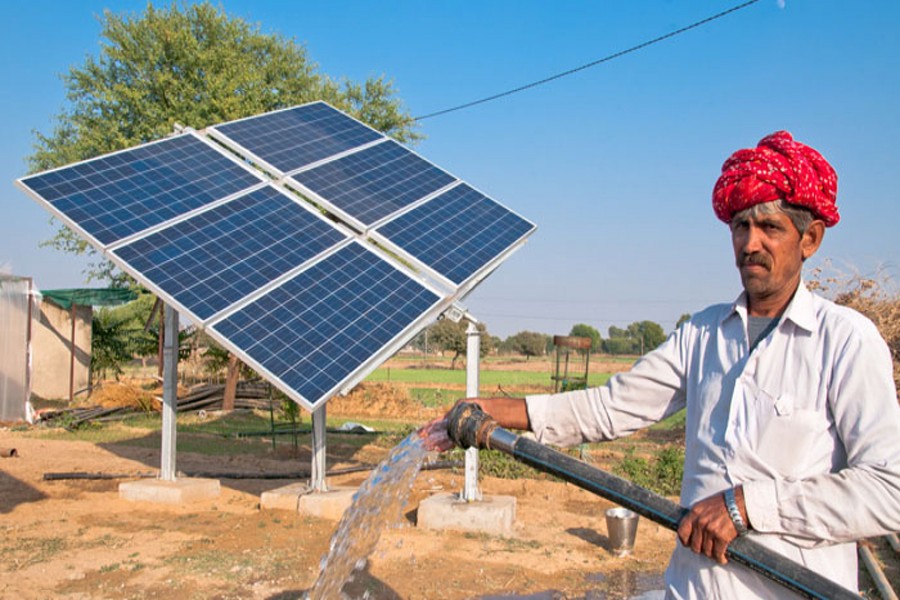
India’s solar financing rises to $10b in 2017
Wednesday, 14 March 2018

NEW DELHI, Mar 13 (Reuters): India's solar industry more than doubled its fund raising to $10 billion in 2017, clean energy consultancy Mercom said, but activity is likely to slow this year as New Delhi plans to slap high tariffs on imports.
Prime Minister Narendra Modi has set a target of raising India's solar power generation to 100 gigawatt (GW) by 2022, five times current levels. The government says India will need to raise at least $125 billion to reach its goal of generating 175 GW of energy from all renewable sources in five years.
New large-scale and rooftop solar installations in India jumped to 9.63 GW last year, compared with the addition of 4.31 GW in 2016, Mercom said, but predicted additional installations will fall by 22 percent to 7.5 GW this year.
"The lower forecast reflects a smaller pipeline of projects scheduled for commissioning in 2018," Mercom said. "Auction activity was not very robust in 2017 and though there was a surge in activity at the end of the year, most of the projects that were tendered are not likely to be commissioned until2019."
Mercom called a proposal by India's safety watchdog to impose a 70 per cent duty on imports of solar equipment from China and some other countries, to protect domestic manufacturers, as an "unexpected and aggressive recommendation that has brought the industry to a standstill".
Any duty would hurt big project developers in India such as SoftBank-backed SB Energy but would be good for local solar component makers such as Indo solar and Moser Baer, which have struggled to compete with Chinese companies such as Trina Solar and Yingli.
Reuters also reported in January that solar modules worth more than $150 million were stuck at various Indian ports due to a dispute over their classification and the import tax applicable to them.
Most of the modules come from China, but several consignments were held up because customs officials demanded that some of them be classified as electric motors and generators, attracting a 7.5 per cent duty, not as diodes, transistors and similar semi-conductor devices with no duty.
India aims for renewable energy to make up 40 per cent of installed power capacity by 2030, compared with 18.2 per cent at the end of 2017, and the ministry of new and renewable energy said in January it was looking to address issues facing solar companies.
"The imposition of any additional duties would make solar more expensive and potentially scare away financially strapped distribution companies who are looking to procure the cheapest power generation source available," Mercom said.